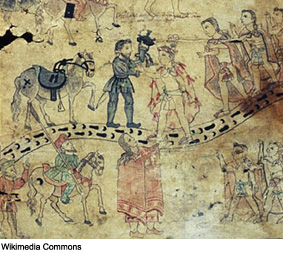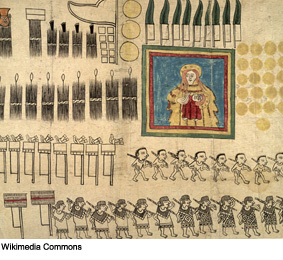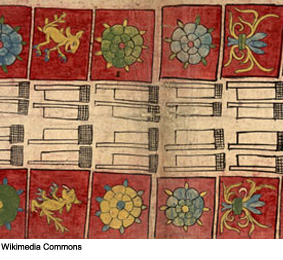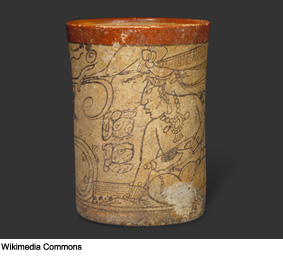5. Is a lienzo the same as a codex?
The term codex refers to any written or pictorial manuscript executed in the indigenous tradition, covering a wide-range of subjects (traditions, events, accounting records, migrations, maps, legends, theology). The word codex is used independently of form or content. The most common form of a codex is paper, which could be folded (sometimes accordion style) or have bound pages (much like a modern book). Other forms include vellum and cloth.
When painted on cloth, such a manuscript is often referred to as a “lienzo,” the Spanish word for canvas. Lienzos were often used for maps and for recording migrations, conquests, a town’s history, and land boundaries.
Over 400 Mixtec-Mexica manuscripts have survived to today. Of these, only about thirteen are of pre-Columbian origin.
In the Maya tradition (Yucatan, Chiapas, and Guatemala), ceramic vases have also been identified with the codex style, delicately painted in black or brown on a beige or light tan background. They were first identified in 1973 by Michael Coe who explains that their crisp, delicate lines could have been made by the same artist-scribes who painted the Classic Maya codices.
